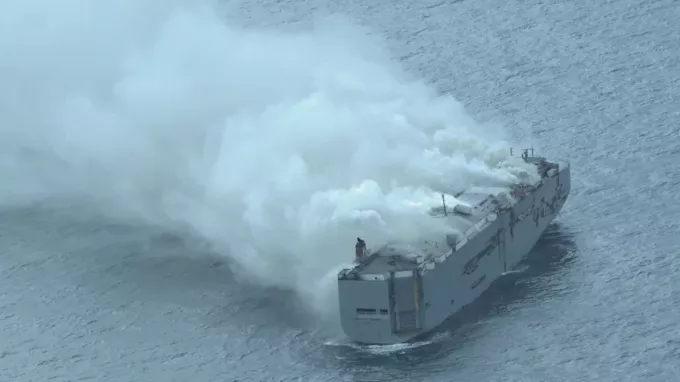Enhancing the safety of dangerous goods shipments
TT Club’s MD loss prevention, Mike Yarwood, outlines crucial changes to IMDG Code regulations coming ...

Yet another car carrier inferno, this one with electric vehicle batteries explicitly named as the culprit, resulting in the death of a seafarer and injuries to 22 others, is raising safety concerns beyond the threat of the fire itself.
Seven of Panama-flagged Fremantle Highway’s 25-strong crew jumped from the ship into the water, resulting in injuries and broken bones – and a drop of some 30 metres entails hitting seawater at 130 kph – more than enough to be lethal.
“One by one, ...
Maersk u-turn as port congestion increases across Northern Europe
Apple logistics chief Gal Dayan quits to join forwarding group
Maersk Air Cargo sees volumes fall as it aims for 'margin in favour of revenue'
Houthis tell Trump they will end attacks on Red Sea shipping
Transpac rates hold firm as capacity is diverted to Asia-Europe lanes
Airlines slash freighter capacity post-de minimis, but 'the worst is yet to come'
MSC revamps east-west network as alliance strategies on blanking vary
India-Pakistan 'tit-for-tat' cargo ban sparks sudden supply chain shocks

Comment on this article